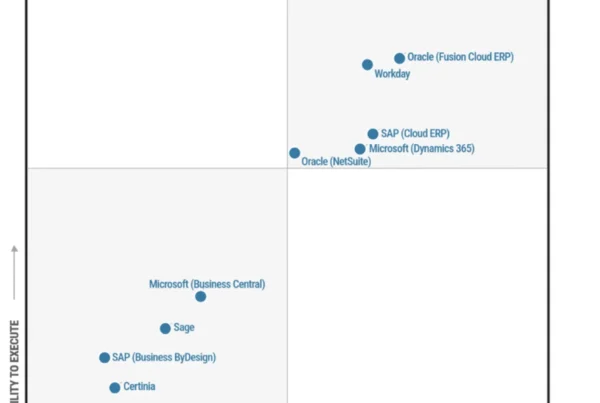
Marketing professionals go to great lengths to understand customers. Detailed personas are written to identify the motivations, interests, and buying patterns of prospects and customers. But all too often, these personas—and their resulting customer journeys—are informed by data points important to the organization, not the customer. You cannot claim to be customer-centric, customer-first, or customer-obsessed if all the data you track is company-centric.
You may be thinking your organization is ahead of the customer journey curve here. After all, you’re already tracking customer-centric metrics such as net promoter score, customer satisfaction score, and customer effort score. But take a second look. These key performance indicators (KPIs) still ultimately measure benchmarks important to the organization, not the customer.
Go beyond KPIs with customer performance indicators
Nobody is arguing that an organization shouldn’t have a robust set of KPIs focused on measuring the fulfillment of important company objectives. But your toolbox of performance indicators doesn’t have to end there—and neither do the possibilities for the customer journey. Rather, take things to a whole new level by also measuring the fulfillment of customers’ objectives and optimizing the journey with the help of Microsoft Dynamics 365 Marketing.
Customer performance indicators (CPIs) quantify and measure outcomes that are desired by customers. These outcomes could include time savings, cost savings, convenience, flexibility, a sense of security, or any number of other outcomes customers deem valuable in the context of your product or service. There’s no cookie-cutter set of CPIs; they will vary widely across industries, organizations, products, and regions.
Consider the scenario of a retailer whose shoppers especially value speed. Acknowledging their shoppers’ priorities along with the need to balance services with expectations, the retailer tracks customers’ wait-time for curbside pick-up. They discover that wait times occasionally go beyond customer expectations. In response, the retailer implements a new feature that sends a flash promotional offer to high-value customers, when they are on their way during busy periods, for a complimentary drink redeemable from the in-store bar when they switch to in-store pickup. It’s a personalized gesture that acknowledges the retailer fell short of expectations but is trying to do its best to make it up to the customer. By optimizing the metrics that reflect what is important to the customer, the retailer can positively impact a whole host of KPIs, from customer satisfaction and customer loyalty to sales revenue—and more.
Where KPIs end and customer performance indicators begin
There is a strong correlation between CPIs and KPIs. As illustrated by our retailer example, meeting the objective of a CPI is likely to boost associated KPIs. In fact, CPIs have been identified as powerful predictors of growth. Similarly, declining CPIs are likely to drag down associated KPIs.
CPIs also uncover insights about KPIs. Take customer satisfaction as an example. A high customer satisfaction score (a common KPI) indicates that an organization is doing something well. And while that’s critical information, this KPI on its own may not be able to provide visibility into what that something is. Or whether that something is even important to the customer. But a set of CPIs designed to measure desired customer outcomes such as personalized touches or chat availability can identify where the strongest correlations lie between what is important to the customer and what is important to the company.
CPIs and KPIs have a lot in common. They both measure performance, they both demonstrate progress toward an intended result, and they both impact the bottom line. For this reason, they can be difficult to distinguish from one another.
In the following table, we identify a few common KPIs. Alongside each KPI, we list one or more CPIs that could be used to enhance the understanding or performance of the associated KPI.
| KPI | CPI | How CPI supports KPI |
| Customer lifetime value | Value customer receives | Customer lifetime value can be increased if there’s focus on ensuring there is a minimum, measurable value provided to the customer as well. For example, a loyalty card program could strive to save customers at least $100 a year. |
| Customer satisfaction score |
In-person customer touches Online chat availability |
Do your customers value personalized, dedicated attention or the ability to quickly query representatives via informal chat applications? Understand the type of service interactions the customer values and implement CPIs to ensure you’re meeting expectations. |
| Product return rate |
Ease of product return Expense of product return |
Is product return rate low because the product is superior or because the return process is unwieldy or expensive? By additionally tracking and optimizing the return experience of customers, you’ll have greater insight into the reasons behind your product return rate. |
| Quote to close ratio | Quote turnaround time | There are many factors influencing quote to close ratio. Find out what your customers value—whether it be fast quote turnaround, flexible pricing plans, or something else—and start measuring it. |
Find your customer performance indicators
What outcomes do your customers value? When you have the answer to that question, you can focus on delivering those outcomes. Every CPI identified, quantified, and measured brings new discoveries, new opportunities, and new levers to pull. Every CPI optimized is one more personalization you can bring to the customer journey, from brand voice and quote delivery to product bundling and customer service availability.
In short, it’s not enough to measure what’s important to your organization—not if you want to optimize the customer journey and exceed customer expectations. You must also measure what’s important to your customers.
Learn how Dynamics 365 Marketing helps your organization optimize the CPIs that lead to elevated experiences.





